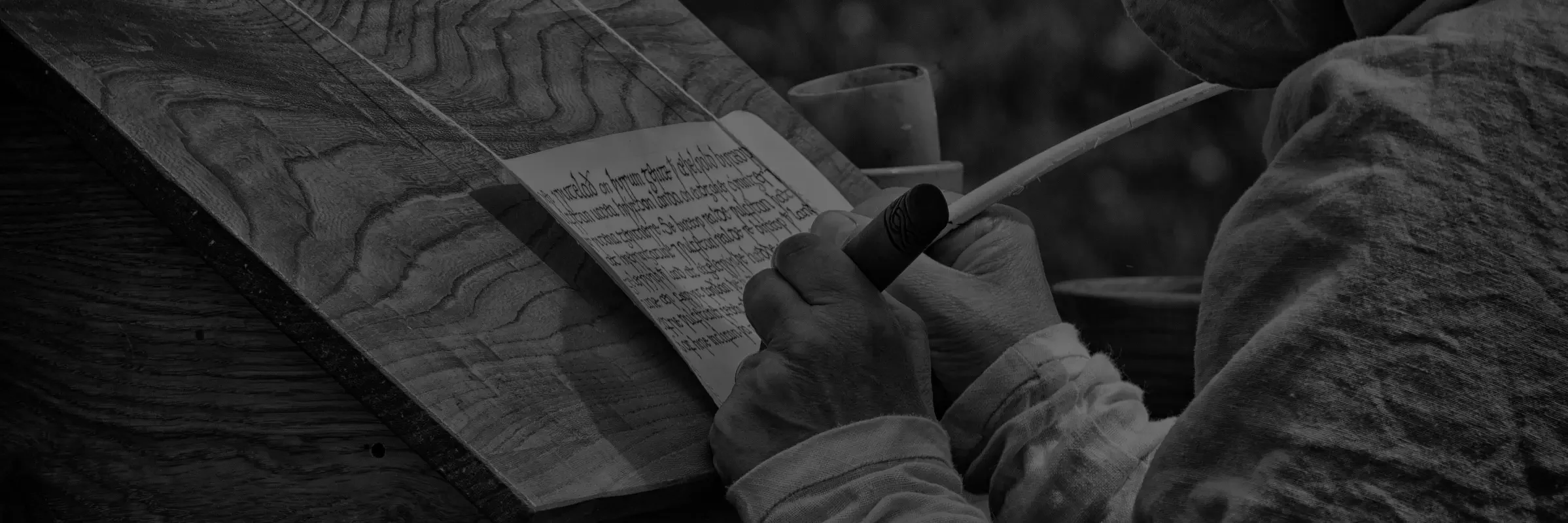Wirral's Hidden History Revealed
Post Medieval – Finger Ring
Finds from Wirral
LVPL-27F72B – POST MEDIEVAL finger ring
Portable Antiquities Scheme Statement
An incomplete copper alloy finger ring of probably late medieval to post medieval date (c.AD 1400-1700)
The object is cast in one piece and has a roped design on the outer edge. The interior of the band is flat and undecorated. The band is thickest at the apex and gradually tapers to two worn breaks. It has dark green patina.
Dimensions: Diameter 22.18mm; thickness 3.21mm; weight 1.69mm
Medieval bling. Read all about it on the Portable Antiquities Scheme database at the below link.
https://finds.org.uk/database/artefacts/record/id/1053090
Medieval – Arrowhead
Finds from Wirral
LVPL-18B0A6 – MEDIEVAL arrowhead

Arrowhead from AD800-1100.
Portable Antiquities scheme statement:
A complete iron tanged arrowhead dating to the medieval period (c.AD 800-1100) See Jessop (1996: 193-5) type T2.
The arrowhead has a small leaf-shaped blade with prominent shoulders and has a lentoid cross section. The blade is largely complete with only a small portion missing from one edge. The lower portion of the blade flattens to a rectangular section and ends with a thick, rounded collar. The collar is preceded by a rectangular tang. The object has a smooth dark brown patina with patches of bright orange and a slightly pitted surface.
Dimensions: Overall length 64.39mm; blade length 39.91mm; tang length 19.95mm; width 12.43mm; thickness 3.5mm; weight 5.9g
This arrowhead falls into Jessop’s type T3 which is characterised by a small leaf-shaped blade and a rectangular tang. Jessop comments that tanged arrowheads are predominantly from contexts dating from the 9th-10th centuries… Tanged arrowheads are manufactured from a flat bar of iron, requiring less technological skill than arrowheads from the 13th~ 15th centuries (ibid).
Early Medieval – Strap End
Finds from Wirral
EARLY MEDIEVAL strap end
Portable Antiquities Scheme Statement
Dimensions: Length 37.83mm; width 8.77mm; thickness 2.44mm; weight 2g
The strap end fits within Thomas’s class B4d which is characterised by parallel sides and animal head terminals with two stylised heads.
The Portable Antiquities Scheme
The Portable Antiquities Scheme

We don’t make rash claims about our finds we get them looked at by the experts
The Portable Antiquities Scheme is run by the British Museum and finds recorded with the scheme help advance knowledge of the history and archaeology of England and Wales.
Easy to search on via town , electoral ward or by map – have a look at the history discovered on your doorstep at the below link
The Boat Beneath the Car Park – Funding Request
The Boat Beneath the Car Park – Funding Request
Wirral Archaeology Community Interest Company will be carrying out a professional archaeological investigation of an alleged ancient, clinker-constructed boat buried beneath the car park of the Railway Inn in Meols, on the northern coast of the Wirral Peninsula.
Wirral Archaeology Community Interest Company are digging deep , can you help us out?
Funding support will go towards the cost of analysis of the samples that will be taken.
ANCIENT WIRRAL BOAT TO BE INVESTIGATED
The Boat Beneath the Car Park
Wirral Archaeology Community Interest Company will be carrying out a professional archaeological investigation of an alleged ancient, clinker-constructed boat buried beneath the carpark of the Railway Inn in Meols, on the northern coast of the Wirral Peninsula.
Chair of Wirral Archaeology CIC, Dominga Devitt commented “There has been intense local interest in this buried object for many years. It has been thought that the boat dates from the Viking era but no professional investigation has ever been carried out to establish the truth, so everyone is really delighted at the prospect of what we might discover.”
The work is due to begin on 18th February 2023 at the Railway Inn. The team from Wirral Archaeology CIC will work in partnership with the pub owners, Greene King, to investigate the buried object under the supervision of professional archaeologist Charles Jones, who has spent many years researching the site of the Battle of Fulford which took place in 1066, and scientist Professor Stephen Harding of Nottingham University.
Professor Harding is an acknowledged expert on Viking settlement and culture on the Wirral peninsula where he comes from. He explains; Our plan is to go down systematically with an array of about 100 narrow bore holes across a wide area in front of the pub where the boat lies – buried approximately 9ft (3m) underneath the surface and capture small samples of wood and surrounding environment for full analysis. The boat is purported to be a very old wooden clinker (overlapping planks), a design of boatbuilding that originated in Scandinavia, and is buried in waterlogged blue clay – a great preservative – and similar to the clay in which the famous Norwegian clinker boats, the Oseberg and Gokstad were deliberately buried”
“The position and depth suggest it is very old, and it may even date from the Viking Age, when Meols was a vibrant seaport and Wirral hosted a large Scandinavian community. Any remains, and surrounding soil will undergo a range of scientific analyses including Carbon14 dating, dendrochronology and wood assessment (state of preservation and possible origins). These tests will provide us with a context and valuable information about the age and possible origin of the boat.”
Lisa Jones, General Manager at The Railway, said: “Team Railway is very happy to be part of this historic moment for Meols and supports the work of the Wirral Archaeology group. There is a buzz of excitement around this and we look forward to finding out more about what is buried beneath the pub car park. Like everyone around here, we all want to identify just what is there and if it really does date back to Viking times.”
Wirral Archaeology feature in new Bernard Cornwell book.
Wirral Archaeology are grateful to Bernard Cornwell for his shout out in the notes for his latest book “War Lord”
You can buy the book from your local book shop or from the usual online places.




